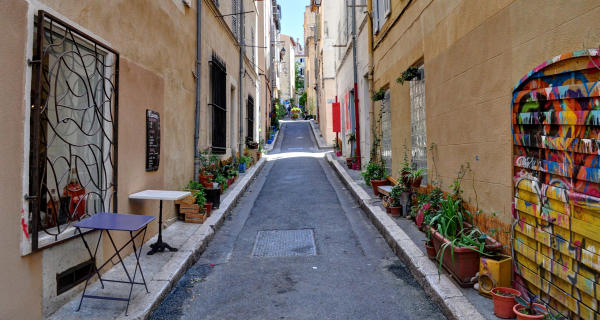
If you’ve never heard of the French TV series Plus belle la vie (Life’s so sweet), France’s longest-running TV series, then Wendy Dubreuil’s article will help you tune into some contemporary French pop culture while also offering a glimpse of the Panier district of Marseille. The Panier largely inspired the fictional Mistral district whose lives, loves, rumors, politics and crime are depicted in the series.
* * *
Imagine visiting Boston in the 1980s and looking for the bar from Cheers, or New York City in the 1990s in search of the Seinfeld diner, or again in 2001 for the coffee shop in Friends. Do that and you can well imagine the excitement that fans of France’s longest-running TV series, Plus belle la vie (Life’s so sweet), feel when they come to Marseille in search of the Mistral Bar in the Mistral district.
They won’t find the Mistral, of course, since it’s a fictional bar in a fictional neighborhood, but the Mistral district was largely inspired by the Panier, which is a very real and stroll-worthy district just a ten-minute walk from the Old Port.
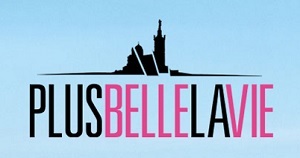 Created in 2004 and still going strong, Plus belle la vie is an easy-going prime-time urban soap opera with myriad characters. It’s a glossy, brightly colored soap, not quite comedy, not quite drama, far from “true” but with frequent nods to issues of the day. Extracts from the series can be seen on its official website.
Created in 2004 and still going strong, Plus belle la vie is an easy-going prime-time urban soap opera with myriad characters. It’s a glossy, brightly colored soap, not quite comedy, not quite drama, far from “true” but with frequent nods to issues of the day. Extracts from the series can be seen on its official website.
Since the show is shot then shown with little delay its writers are able to incorporate current events into the storyline. This allows characters to discuss the issues of the day while living out their fictional lives, loves, friendships and melodramas. Demonstrations held during parliamentary debate on same-sex marriage, the aftershock of the terrorist attack against the weekly Charlie Hebdo and the kosher supermarket, and the French moratorium on the exploitation of shale gas have all been discussed by characters while the subjects were still headlining the news. Questions of racism, homosexuality, violence, rape, and drug and alcohol addictions all find a place in the not-to-be-taken-too-seriously soap-opera-style intrigue. The show is broadcast at 8:25pm, overlapping with the prime evening network news hour.
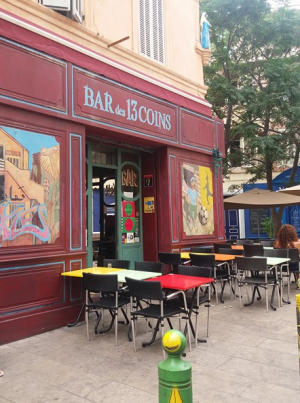
Most of the scenes of Plus belle la vie are shot behind the closed doors of the La Belle de Mai studios, in the 3rd district of Marseille, rather than in the Panier. Nevertheless, fans visiting Marseille and looking for the Mistral Bar, one of the central settings in the series, will often end up reveling in a drink at the Bar des 13 Coins, 45 rue Sainte-Françoise on the Panier’s Place des Treize Cantons, which the show’s production designer says inspired the fictional Mistral Bar in the TV series. The Bar des 13 Coins is a small family café-restaurant with outdoor tables on a shady terrace with three big trees and colorful artwork on the facade. Like a café-bar on a village square in Provence, this is the venue to meet friends to share the trials and joys of everyday life in the sunny side of France.
In a sense, Plus belle la vie could take place anywhere in France, except for the occasional view of the Mediterranean or of Notre Dame de la Garde Church or talk about the OM, Marseille’s soccer team. Furthermore, the actors don’t even speak in the colorful singing accent of southern France, let alone with the slang of Marseille. Some say that if the real local accent were spoken it would be necessary to have subtitles in French. But even removed from local reality “Plus belle la vie” has been a hit in Marseille as well as throughout France.
Viewers have love-hate relationships with the assortment of characters, while the central character remains the neighborhood itself. Which brings us to the real Panier, a district of narrow, sloping streets, colorful facades and shutters, laundry hanging out the window, and a history of written history dating back to the ancient Greeks.
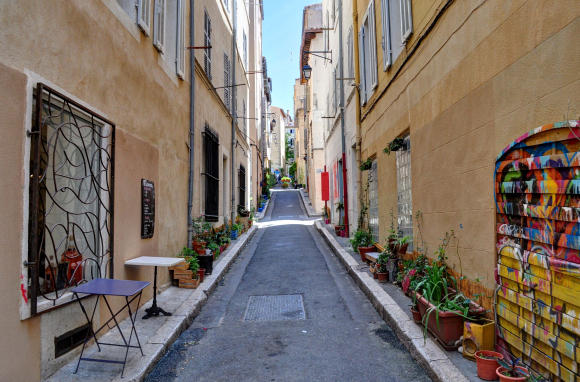
From ancient Greeks to poor immigrants to cut-throat films to gentrification
Settled in 630 BC by the ancient Greeks, the Panier (long before it took on its current name) was the area first settled in Marseille. More recently, due to its location near the seaport, the Panier has continued to welcome successive waves of immigration: Neapolitans, Corsicans, South Americans, North Africans, Vietnamese and Comorians from the islands near Madagascar.
This neighborhood draws its name from the Logis du Panier, an inn that existed in the area in the 17th century and probably had a basket (panier) suspended outside. The Panier became a poor, working class neighborhood, what the French call a quartier populaire, when in the 17th century, wealthy merchants left it to settle in the new neighborhoods in the east which were created under the impetus of Colbert during the reign of Louis XIV. By the mid-19th century the Panier had acquired its reputation as a rough, dangerous, crime-ridden area, a reputation that it held onto until several decades ago.
The “Mediterranean noir” writer, Jean-Claude Izzo (1945-2000), who grew up in the Panier, paints an old Bronx-like picture of the area in “Total Chaos” or “Total Kéhops” in French. Izzo’s crime fiction follows the protagonist Fabio Montale, a disillusioned local cop making his rounds on the hard, seedy streets of this neighborhood, a den for gangs and drug dealers, full of sailors, prostitutes and whorehouses.
Izzo also vividly describes the demolition by the German occupying force of a section of the Panier in 1943, as they considered its maze of narrow streets to be a haven for resistant fighters, refugees, criminals, prostitutes, Jews and Communists. On January 24, 1943, some 30,000 inhabitants from the neighborhood were evacuated, with about 2,000 sent to concentration camps. Then 1,500 houses in the lower section of the Old Town were dynamited.
Through the eyes of Montale, readers witness the humiliation of Fabio’s father, a docker at the port, and his mother, who toiled away 14 hours a day, packing dates. They were rounded up in the middle of the night on January 24, 1943 because of an expulsion order. Fabio reflects back about that day and the Nazis’ dream of destroying part of this neighborhood as it was considered to be a den of degenerate behavior.
A mini-series based on Izzo’s books, with Alain Delon starring as Fabio Montale, was shown on French TV in 2002.
Even just 20 years ago the Panier was known as a cut-throat area and was largely avoided by those living outside the neighborhood. Its cinematic reputation didn’t help. Borsalino (1970), directed by Jacques Deray and starring Alain Delon and John-Paul Belmondo, is a famous French gangster movie taking place in 1930. La French (in English, The Connection) (2014), directed by Cédric Jimenez and starring Jean Dujardin and Gilles Lellouche, is an action film about a drug gang in the 1970s.
The City of Marseille began renovating the Panier in 1983, and little by little the neighborhood has changed. Increasingly gentrified while retaining some funk and grit, the Panier is now viewed as far safer than decades ago. It has been called Marseille’s Montmartre. Artist studios, craft shops and trendy cafes and bars have replaced brothels of the past.
Several years ago a local association and a local theater teamed up to produce as a community project a counter-version of Plus belle la vie called C’est pas joli, joli (It’s not a pretty picture). Residents of the Panier got their hand at acting, guided by professionals but bringing to the screenplay their own interpretation. Here are the first and second episodes.
Visiting the Panier
Large portions of the Panier are closed to car traffic from late morning onwards, giving the neighborhood a distinctive atmosphere of a village in Provence, in particular around the Bar des 13 Coins.
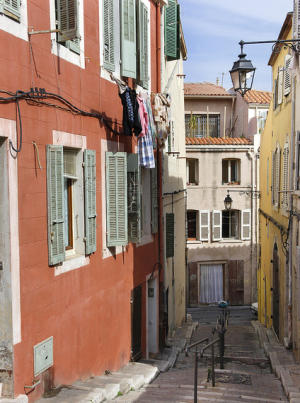
Bocce ball, which the French call boules, with pétanque being its Provencal version, is right at home here… at the Musée de la Boule, a fun mix of shop, museum and a pétanque court. And where there is pétanque in Provence there’s sure to be pastis, the anise-flavored spirit and cocktail associated with summer days in the South of France. So it’s no surprise to find the Janot Pastis Boutique next to the Boule Museum. Also nearby is Le Clan des Cigales, a restaurant serving Mediterranean cuisine based on French products. A boutique across the street sells santons, small figurines placed in traditional Provence Nativity-village scenes. From there you need only follow your nose to find nearby another product associated with this city: Marseille soap, made with vegetable oils.
The Panier is very hilly, so for less walking the district can be visited by taking the little tourist “train,” which can be gotten at the Quai du Port across from City Hall (Hôtel de Ville). The main sights will be pointed out with recorded commentary in French, English and Italian. Riders can hop off to visit La Vieille Charité, formerly a home for the poor and wayward built between 1671 and 1749, which is one of the city’s most important historical monuments. La Vieille Charité now houses museums with a permanent collection of archeology from around the world, galleries, a cultural center, a café and a small cinema. A temporary exhibit examining the travels of the American writer Jack London in the South Seas is being shown here from Sept. 8, 2017 to Jan. 7, 2018.
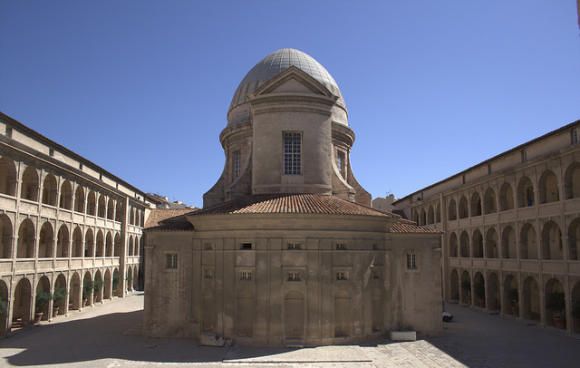
A bilingual (English/French) walking tour of Le Panier is available through the tourist office on Saturday from 10:30 a.m. to 12:30 p.m. It sets out from the Tourist Office located at 11 La Canebière and enters the heart of the Panier district via the Port area, just as the ancient Greeks did. The tour ends at the Place de Lenche, site of the Greek agora and the Roman forum. The area, busy with cafés and restaurants, offers a spectacular view of the old Port and the Notre Dame de la Garde Church.
The tour provides the keys to understanding the development of Marseille through the centuries, including the separation between the wealthier coastal zone to the south and the poorer neighborhoods to the north, and reconstruction work that was necessary following demolition by the German occupying force in 1943.
Near the Panier: The Cathedral and the MuCEM
Just as one doesn’t go to Paris to only visit Montmartre, one doesn’t come to Marseille simply to visit the Panier, hardcore Plus belle la vie fans aside.
Nearby, down by the marine terminal, is the enormous Sainte Marie Majeure Cathedral, often referred to as La Major. Marseille’s recent architectural claims to fame are three stunning museum buildings: the Villa Méditerranée cultural and conference center, the Regards de Provence Museum, and the MuCEM. They were all inaugurated in 2013, the city’s year as the European Capital of Culture. (Marseille has been named European Capital of Sport for 2017, but that’s another story.)

The most popular and renowned of the three is the MuCEM, the Museum of Mediterranean Civilization and Culture. More than a museum, actually, the MuCEM is a multidisciplinary cultural institution housing the Mediterranean Gallery, major temporary exhibitions, and much more.
A panoramic view can be had from the rooftop terrace eating and drinking area, which includes four spaces—café, snack, casual, chic—collectively called Le Môle Passédat. Reservations are recommended for the most polished of these, La Table. The eateries are overseen by Gérard Passédat, chef of the 3-star Michelin restaurant Le Petit Nice located in the Marseille’s 7th arrondissement.
Meanwhile, the port remains the city’s long-time home to bouillabaisse, the centerpiece of Marseille’s sea-inspired cuisine.
Other opportunities for fine dining, shopping and artist exhibitions can be found in the beautifully renovated Docks Village, which opened in 2015, or the Terrasses du Port. These renovations and constructions were part of the ambitious Marseille-Euroméditerranée project, which was initiated in 1995 to renovate a nearly 1200-acre zone in the heart of the city, between the commercial harbor, the Old Port and the TGV station. Involving a 7-billion euro investment, it was at the time the largest urban renewal project in southern Europe.
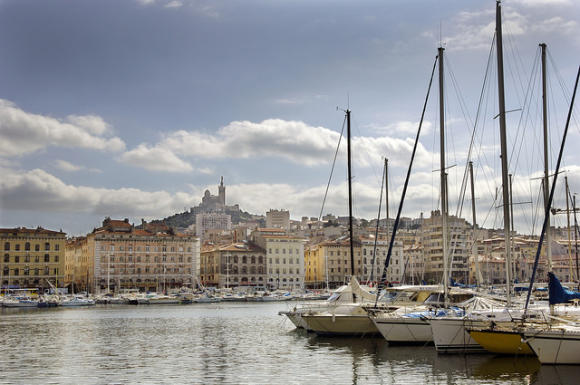
Crime and Safety in Marseille
Marseille is often compared to my own hometown of Chicago in terms of crime and safety. Drug- and weapons-related gang and organized crime violence are not uncommon in certain quarters. As in Chicago, in Marseille I would avoid certain areas, especially at night. That goes for much of the 3rd arrondissement, one of the poorest neighborhoods in France. The centrally located St. Charles train station may have been beautifully modernized but I would not loiter around the station area. Neither would I walk around La Canebière at night. Keeping an eye on one’s luggage, not placing a purse on the ground by one’s chair in a restaurant, and not flaunting expensive-looking costume jewelry, let along the real thing, are common sense tips that don’t solely apply to Marseille but are worth keeping in mind with respect to this city.
But don’t let those warnings keep you away from discovering France’s second largest city and most multicultural port city, particularly the portions described in this article. For my recent visit, I booked accommodations in the Panier itself and walked around the neighborhood alone at night. I felt safe on the Waterfront with the MuCEM and other new museums, at the port. There’s a police station, the Commissariat de l’Evéché, a stone’s throw from the Major Cathedral at the entrance of the Panier.
(c) 2017
Wendy Dubreuil is a conference interpreter with a passion for French TV shows and films and challenging social issues.

